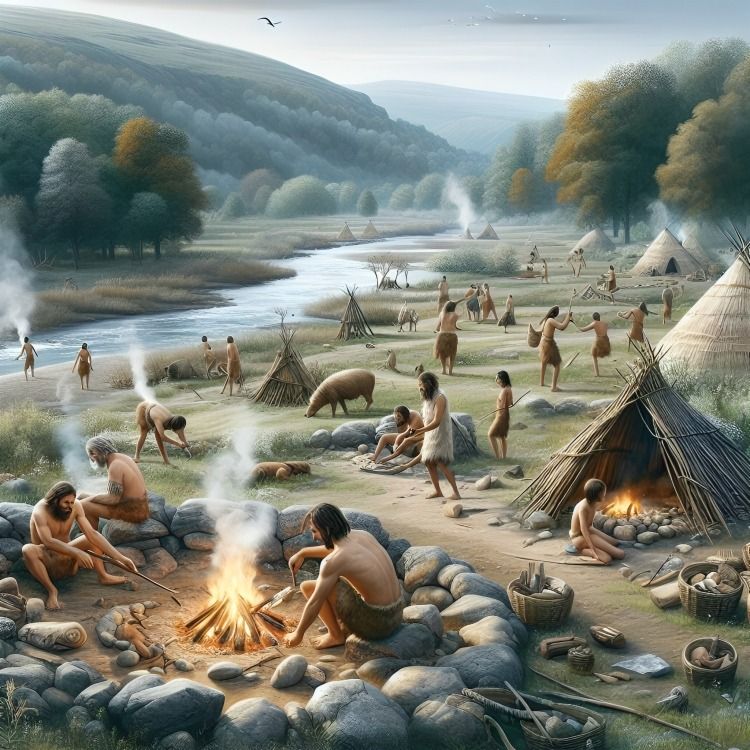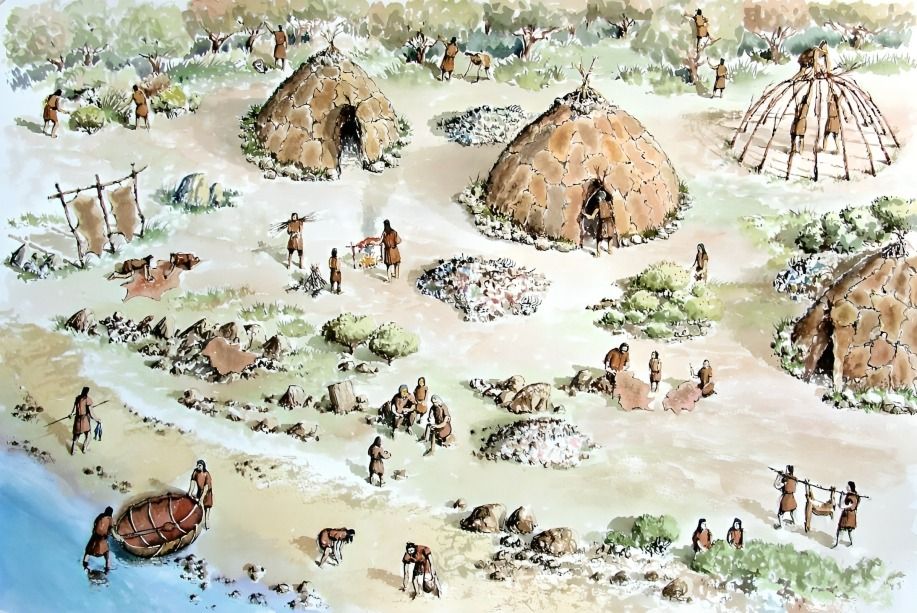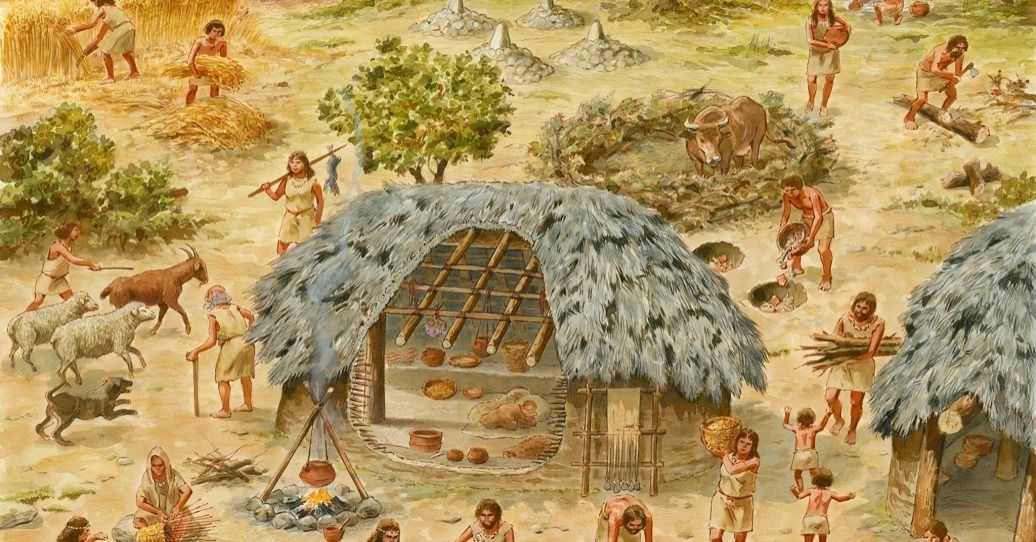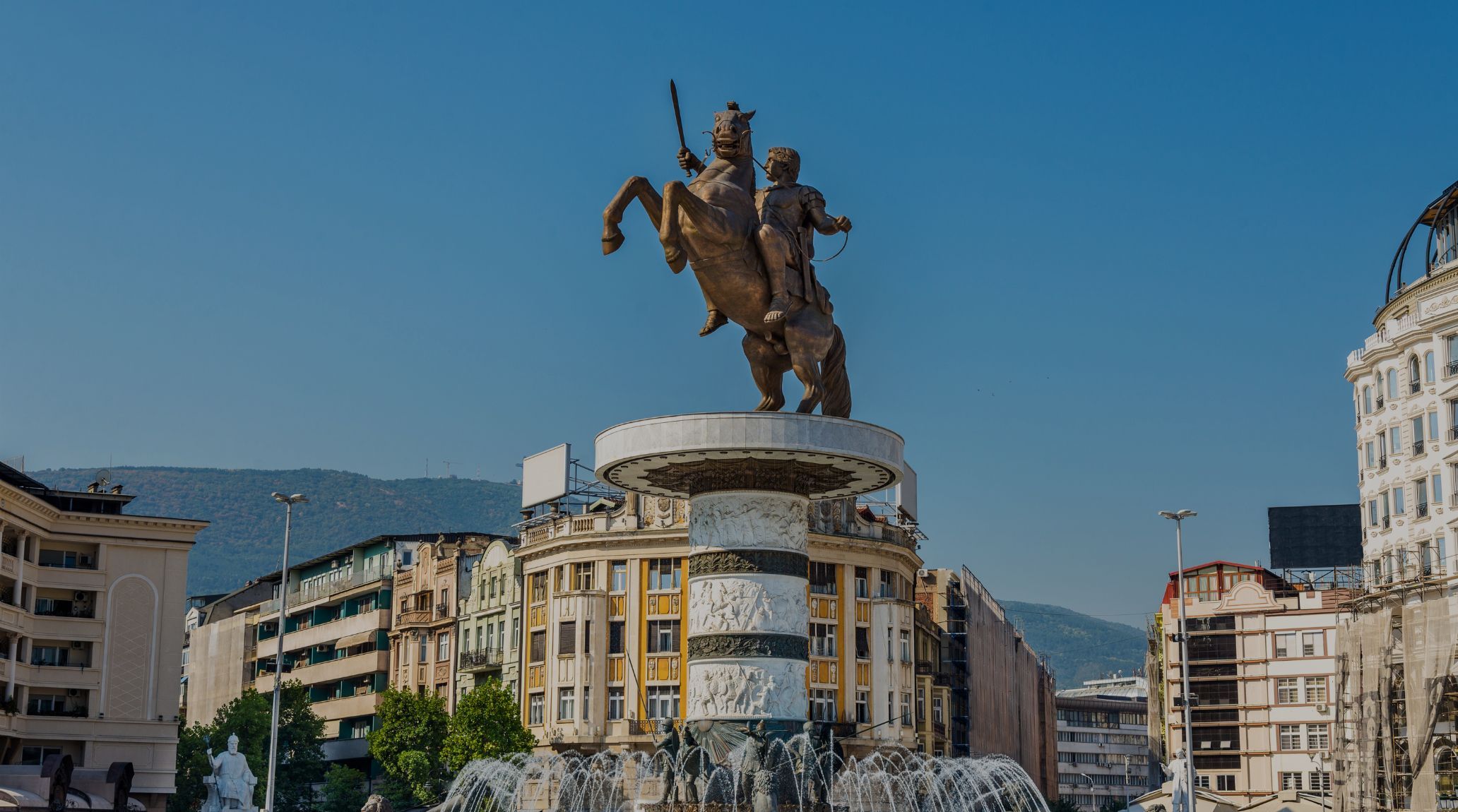
“
The Mesolithic period marked a critical shift in how early humans lived, as they transitioned from fully nomadic lifestyles to more stable, semi-permanent settlements. In this article, we uncover 20 key facts about Mesolithic settlements, exploring how these early communities adapted their dwelling practices to a changing world.1
1
”

Mesolithic settlements were often temporary or semi-permanent, reflecting the nomadic lifestyle of hunter-gatherers who moved seasonally in search of food.
Coastal areas were popular locations for Mesolithic settlements due to the abundance of marine resources, such as fish and shellfish. 1
River valleys and lakes were also favored for settlements, providing fresh water, fish, and fertile land for gathering plants. 2
Mesolithic people built simple shelters using wood, animal skins, and thatch, often creating huts that could be easily dismantled and relocated. 3
Some Mesolithic settlements featured pit houses, shallow dug-out dwellings that provided protection from the elements and predators. 4
Evidence of semi-permanent settlements has been found in Northern Europe, where communities began staying in one place for longer periods due to abundant resources.5
Mesolithic people often used natural caves as shelters, particularly in mountainous and coastal regions, where they could take advantage of existing structures. 6
Hearths, or fire pits, were central to Mesolithic settlements, providing warmth, cooking areas, and places for social gatherings. 7
Middens, or trash heaps, found near Mesolithic settlements reveal their diet and daily activities, including discarded shells, bones, and tools. 8

Some settlements were located on islands, which offered protection from predators and rival groups, as well as access to marine resources.
Mesolithic communities likely built wooden platforms and walkways in marshy or wetland areas to access resources and maintain settlements in difficult terrain. 9
As populations grew, Mesolithic settlements became more structured, with designated areas for living, food preparation, and tool-making. 10
Seasonal migration patterns influenced the location of Mesolithic settlements, with communities moving to highlands in the summer and lowlands in the winter. 11
Mesolithic people developed woodworking techniques that allowed them to build more sophisticated structures, including timber-framed houses. 12
Some settlements show evidence of early forms of agriculture, with wild grains and seeds being gathered and stored, laying the groundwork for future farming. 13
Fishing was a crucial part of life in many Mesolithic settlements, with fish traps, nets, and harpoons used to exploit river and coastal resources. 14
Mesolithic settlements often featured communal areas where tools were crafted, food was processed, and goods were exchanged with neighboring groups. 15
Burial sites have been discovered near some Mesolithic settlements, suggesting that these communities had spiritual beliefs and rituals related to death. 16
Archaeological findings suggest that some Mesolithic settlements were used repeatedly over generations, with evidence of rebuilding and maintenance. 17

Mesolithic settlements were typically small, consisting of a few families, but they likely interacted with neighboring communities through trade, marriage, and shared hunting grounds.


